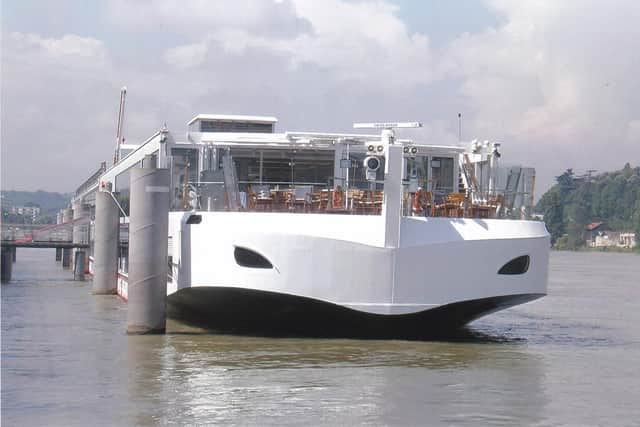Rhone poses a formidable challenge


This was sufficient to give a detailed insight into what was involved in river and canal navigation from the Mediterranean to central France.
The procedure was to lower as much deck equipment as possible in order to pass under low bridges and enter locks.
Advertisement
Advertisement
From a coaster crew’s perspective, the duties included lowering the ship’s masts, pressing a button to drop the complete navigating bridge and wheelhouse into a well space aft of the steel hatch covers and, on occasion, lifting out the steel rails on the fo’c’s’le head plus detaching the funnel casing and removing the entrance cowl leading down to the main deck accommodation area. This had the effect of giving the Vibrence a mean air draft of 4.5 metres.
Negotiating the deep locks on the Rhone passage was a dramatic experience. Despite all the time taken to remove and stow all the parts mentioned thus converting a coastwise ship almost into an inland waterway barge.
Together with competitive freight rates, such arrangements make a viable proposition against truck and railway transhipment movements to and from coastal ports. Nowadays, of course there are also environmental advantages to be taken into account.
In order to head up the Rhone to the heartland of France a brief stop is usually made at Port St Louis about 40 or so miles west of Marseilles. Then a journey from the Canal du Rhone is made to the ancient walled city of Arles. About a mile distant from there is a small quay used by river pilots to embark for the 200-or-so-mile route upstream to Lyon.
Advertisement
Advertisement
The Viking Delling did not require the aforementioned procedures having been designed for the transiting of waterways with low crossings. Together with “fleet mates” she had been built as part of a composite order in excess of 20 vessels placed by Basel-based Viking River Cruises. These comprised of a new design described as “Longships” and built at the Neptun Werft shipyard at Rostock-Warnemunde in the former East Germany.
This major order for river cruise vessels was planned for completion in 2013-15 for service on the Rhine, Main, Elbe, Moselle and Danube as well as the Dutch waterways and the Lyon-Avignon route in France.
To give a comparison in dimensions the UAL Cologne seen in Montrose during the latter days of January is 118 metres in length while the Viking Delling and the other “Longships” are 135 metres. Corresponding draft is 6.5 metres for the cargo ship compared with 1.60 metres for the river cruise ship!
The receipt of this substantial order by the German shipyard was a crucial element in securing employment for that area, not only for the shipyard employees, but also the local supply chain. From 2002-12 Neptun Werft had delivered 23 river cruise vessels to different owners making it a leading yard in that specialist field.